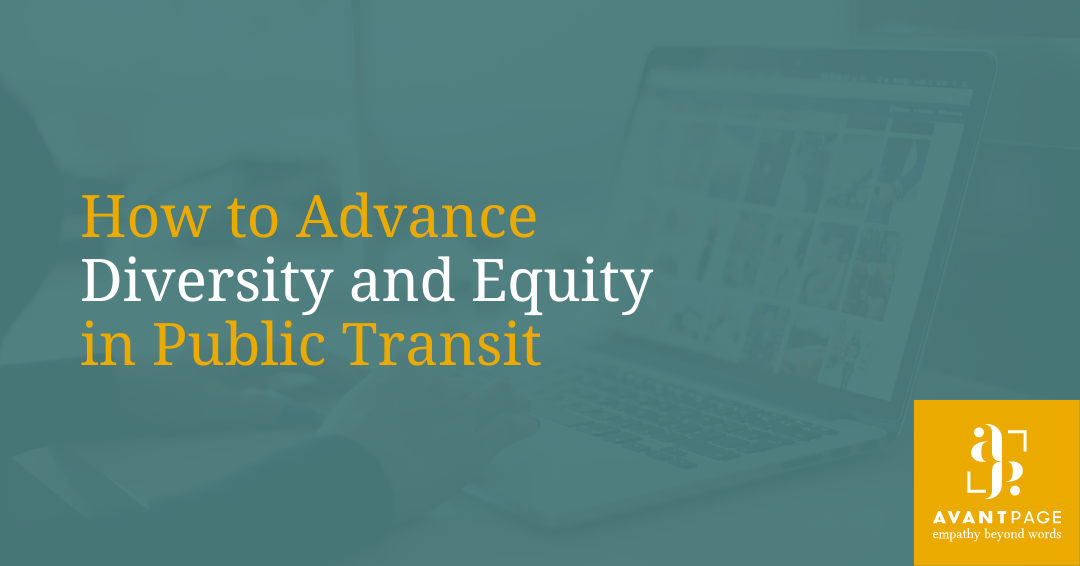Public transit is a major component of urban life. On any given weekday in the United States, city dwellers will board buses, light rails, subways, and other forms of public transportation around 34 million times, according to data from the American Public Transportation Association. These services allow millions of US residents to travel to and from their jobs, schools, hospitals, and anywhere else they need to go about their day-to-day lives.
At the same time, public transit systems have also historically failed to serve all members of their communities equally, leaving some groups — for example, people with limited English proficiency (LEP) and disabilities — with limited access to these vital resources. As a result, conversations surrounding diversity and equity in public transit are becoming an increasingly more important part of social justice efforts.
The population of individuals with LEP in the US has increased significantly in recent decades. Although this growth is particularly evident in regions with strong public transportation networks like the New York City metropolitan area and greater Chicago, cities without robust public transportation networks are seeing significant growth as well.
Plus, research from the Washington Metropolitan Area Transit Authority found that individuals with LEP are about three times as likely to rely on the bus than individuals who speak English fluently. Likewise, New Yorkers with disabilities have been found to be more likely to use the bus than their counterparts (and they were less likely to use the city’s famous subway system — probably due to the fact that less than a third of the city’s subway systems are wheelchair accessible).
Just as other sectors must evolve to provide for the growing population of individuals with LEP, so too must public transit — factoring populations with LEP into this evolution should be at the forefront of any effort to improve diversity, equity, and inclusion in public transit.
To create a truly equitable and diverse approach to developing and maintaining public transportation systems, it is essential that communities with LEP and people with disabilities are meaningfully engaged in the planning, design, and operation of these systems.
The Importance of Public Engagement in Transportation Initiatives
Public involvement is an essential component of transportation planning and decision-making. In developing a strategy for public transportation accessibility, it’s particularly important to center diverse voices, to ensure that you’re serving all members of the community.
Engaging members of the public provides a way for communities to have a say in public transit projects. This in turn enables these efforts to have a meaningful and positive impact on their lives — it also ensures that the needs and concerns of all stakeholders are taken into account.
Language barriers can make it difficult for LEP individuals to access information or participate in meetings, while physical barriers such as inaccessible meeting locations or a lack of accommodations for people with sensory impairments can prevent people with disabilities from participating fully.
Equitable access to public involvement opportunities is particularly important for people who come from low-income backgrounds, people of color and people with LEP, as these people tend to be more reliant on public transit than their counterparts. As a result, it’s especially important to communicate with these folks and hear their opinions on any efforts to improve public transit accessibility.
There are a number of best practices that can help transportation agencies effectively engage with LEP and people with disabilities. These include:
- Providing translation and interpretation services at meetings and events
- Translating any official communications regarding public transit projects into languages spoken widely in your area
- Using accessible formats such as large print or audio recordings for materials
- Ensuring that meeting locations are physically accessible and equipped with necessary accommodations such as assistive listening devices
- Partnering with community-based organizations that can help facilitate engagement with these groups
- Hosting community meetings in zip codes with high populations of LEP individuals.
For example, in 2021, when New York City’s subway system began offering free rides to passengers who frequently used contactless payment methods, the city translated its messaging on this initiative into Haitian Creole, Spanish, Russian, and a handful of other languages spoken widely. Such efforts can go a long way toward engaging LEP communities, especially when done in conjunction with the other practices above.
Cultural Considerations to take in Community Engagement Efforts
Effective community engagement requires an understanding of the cultural context in which it takes place. This is particularly important when working with communities that have LEP or disabilities, as these groups may have unique barriers to participation that need to be addressed.
To engage individuals with LEP, it is critical that any outreach strategy focuses on culturally competent messaging that speaks to them in their language and reflects their cultural values. Likewise, efforts to engage people with disabilities should also use messaging that empathizes with them and makes them feel both welcome and safe on public transit.
While linguistic considerations are certainly important for individuals with LEP, it’s also important to work with community-based organizations that can help transportation agencies communicate effectively with communities that have lower levels of English proficiency. Messaging shouldn’t be a word-for-word translation of English documents, but it should also take cultural contexts into consideration — this is the best way to ensure authentic community engagement.
Conclusion
Advancing diversity and equity in public transit requires meaningful public involvement, particularly for communities with LEP and disabilities. By prioritizing the needs and concerns of these communities, we can create more inclusive and equitable public transit systems that benefit everyone.
Avantpage has worked closely with state departments of transportation, transportation commissions, and several other organizations at the forefront of innovative transportation. We are proud to offer translation, interpreting, and other cultural mediation services for projects to improve diversity, equity, and inclusion in public transit — for more information about our services, contact us at [email protected] or (530) 750-2040.
